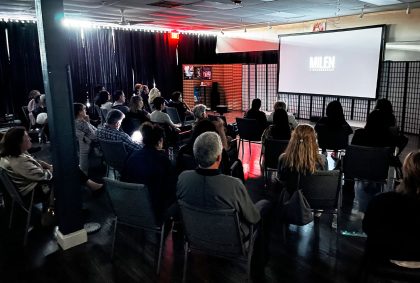Commerce Department
WASHINGTON – The U.S Department of Commerce today delivered to Congress a comprehensive report on “The Competitiveness and Innovative Capacity of the United States.” The report serves as a call to arms, highlighting bipartisan priorities to sustain and promote American innovation and economic competitiveness.
The report makes three important findings:
- Federal investments in research, education and infrastructure were critical building blocks for American economic competitiveness, business expansion and job creation in the last century;
- Failures to properly invest in, and have comprehensive strategies for, those areas have eroded America’s competitive position; and,
- In a constrained budgetary environment, prioritizing support for these
Speaking before an event at the Center for American Progress (CAP), Commerce Secretary and former CEO John Bryson highlighted the importance role innovation plays in the nation’s economy.
“This is a topic of pivotal importance,” Bryson said. “Our ability to innovate as a nation will determine what kind of economy – what kind of country – our children and grandchildren will inherit, and whether it’s a country that holds the same promise for them as it did for our parents and grandparents.”
The report was mandated as part of the America COMPETES Reauthorization Act of 2010, which was signed into law by President Obama in January last year. The report addresses a diverse range of topics and policy options, including: tax policy; the general business climate in the U.S.; barriers to setting up new firms; trade policy, including export promotion; the effectiveness of federal research and development policy; intellectual property regimes in the U.S. and abroad; the health of the manufacturing sector; and science and technology education.
The full report, as well as additional resources, can be found online at www.commerce.gov/competes.
Some key findings of the report include:
Basic research. While private citizens and businesses are the top source of new ideas, the government plays a key role in supporting and developing their innovations. Examples of how this federal seed money has helped change our world are can be seen in the development of the Internet, satellite communications and semiconductors, among other job-creating advances. The report recommends federal funding be increased for basic research – universities and research centers, for instance. Consistent with the long-held view of President Obama, the report also recommends a tax credit a tax credit be enhanced and extended for private-sector R&D to give companies appropriate incentives to innovate and improve the way basic research is transferred from the lab into commercial products. The report recognizes that through efforts like the Small Business Jobs Act, the i6 Green Challenge, and a number of other initiatives, including increased funding, the Obama Administration has shown a commitment to spurring innovation through supporting research.
Education. The COMPETES report underscores the importance of education in the science, technology, engineering and mathematics, or STEM, fields. For instance, women with STEM jobs earned 33 percent more than comparable women in non-STEM jobs. As a result, the gender wage gap is smaller in STEM jobs than in non-STEM jobs. Ongoing and new administration initiatives are addressing these challenges by making college more affordable, spurring classroom innovation at all levels and expanding the size and quality of STEM teacher ranks. To succeed in the global economy, government must encourage students and workers to pursue STEM education.
Infrastructure. The report highlights the importance of federal government investment in an expansive modern electrical grid that provides robust broadband Internet access in both urban and rural communities. Presently, 68 percent of American households have adopted broadband, an almost eight-fold increase since 2001. Small and medium-sized enterprises (SMEs) have benefitted hugely from the Internet and created more than twice the number of jobs as firms not on the Web, creating 2.6 jobs for each one eliminated. The report also highlights Obama Administration efforts to build a 21st century infrastructure, including the NextGen Air Traffic Control System, opening spectrum for wireless communication, creating smart grid standards and providing unprecedented funding for road, rail and bridge projects across the country.
Supporting Manufacturing. The report also examines manufacturing, recognizing that a flourishing U.S. manufacturing sector is crucial to competitive strength, economic growth and job creation, as well as to sustaining a strong middle class. In 2009, manufacturing comprised 11.2 percent of GDP and 9.1 percent of total U.S. employment, directly employing over 11 million workers. Manufacturing is also the biggest source of innovation in our economy. Sixty-seven percent of all the business R&D in America is done by manufacturing companies. The report outlines a series of steps the Obama administration has taken to support American manufacturing, including rescuing the U.S. auto industry, creating the White House Office of Manufacturing Policy and forming the Advanced Manufacturing Partnership (AMP), as well as initiatives such as the Materials Genome Initiative and the National Digital Engineering and Manufacturing Consortium.
The report also touches on a number of other areas, including the benefits of regional clusters, the Administration’s Startup America Initiative, the National Export Initiative, corporate tax reform, as well as the importance of intellectual property protection.
For more information on any of these sections, or to view the full report, visit www.commerce.gov/competes.





